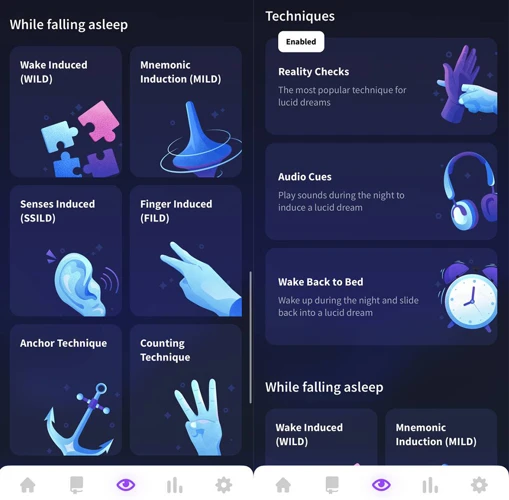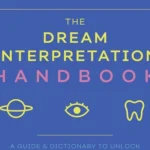Have you ever experienced the surreal sensation of being fully aware that you’re dreaming while you’re still in the dream? Lucid dreaming, as it’s known, allows you to consciously navigate and control your dreamscape, opening up a world of limitless possibilities. But beyond the exhilaration and entertainment, lucid dreams hold valuable insights into our subconscious minds. Unlocking the meanings behind these dreams can offer profound self-discovery and personal growth. In this comprehensive guide, we dive deep into the realm of lucid dreaming, exploring its definition, the power of symbols within these dreams, techniques to unlock their meanings, how to achieve lucidity, and the common scenarios and their interpretations. Join us on this extraordinary journey into the depths of your mind and uncover the secrets that lie within your lucid dreams.
What is Lucid Dreaming?

- Definition of Lucid Dreaming: Lucid dreaming refers to the state of being consciously aware that you are dreaming while still in the midst of the dream. It is a unique phenomenon where the dreamer possesses the ability to recognize and control the dream environment and their own actions within it.
- Benefits of Lucid Dreaming: Lucid dreaming offers numerous benefits, such as enhancing creativity, improving problem-solving skills, aiding in skill development, reducing nightmares, and providing a platform for self-exploration and personal growth.
- Lucid Dreaming vs Regular Dreaming: Unlike regular dreaming, where the dreamer is often unaware of the dream state and the lack of control over the narrative, lucid dreams enable individuals to actively participate, influence, and shape their dreams according to their desires and intentions.
Definition of Lucid Dreaming
Lucid dreaming, as defined by experts in the field, is the phenomenon of being aware that you are dreaming while still in the dream state. It involves a heightened sense of self-awareness within the dream, allowing individuals to recognize that they are experiencing a dream and not reality. This awareness provides the dreamer with the opportunity to exercise control over their actions, the dream environment, and even the storyline of the dream itself. People who are lucid dreamers often report feeling an incredible sense of empowerment and freedom as they navigate through their dreamscape, able to consciously direct their experiences.
Benefits of Lucid Dreaming
- Enhanced Creativity: Lucid dreaming provides a creative playground where you can freely explore and experiment with ideas without the constraints of reality. This can lead to innovative solutions and breakthroughs in various creative endeavors.
- Improved Problem-Solving Skills: Within the realm of lucid dreaming, you have the opportunity to confront and solve challenges in a safe and controlled environment. This can translate into improved problem-solving skills in your waking life as well.
- Aiding in Skill Development: Lucid dreaming can be used as a practice ground for honing specific skills or rehearsing scenarios. Whether it’s mastering a musical instrument, perfecting a dance routine, or enhancing athletic abilities, lucid dreaming offers a unique platform for skill development.
- Reduced Nightmares: For those who experience recurring nightmares or disturbing dreams, lucidity can be a powerful tool to take control of the dream narrative and transform the experience into a more positive and empowering one. This can lead to a reduction in the frequency and intensity of nightmares.
- Self-Exploration and Personal Growth: Lucid dreaming can serve as a gateway to deep self-exploration and understanding. By delving into the symbolism and meanings within your lucid dreams, you can gain valuable insights into your subconscious mind, emotions, and unresolved issues.
Lucid Dreaming vs Regular Dreaming
- Control: In regular dreaming, individuals typically have little to no control over the dream content. The events and storyline unfold without conscious influence. However, in lucid dreaming, individuals have the ability to actively control and manipulate the dream environment, characters, and events, enabling them to shape the dream experience as desired.
- Awareness: In regular dreaming, individuals are often unaware that they are in a dream state. The dream scenarios feel real, and the dreamer may believe the events are happening in waking life. In contrast, lucid dreaming involves a heightened level of self-awareness, with the dreamer consciously recognizing that they are dreaming.
- Memory: Regular dreams are often fleeting, and upon waking, the details and events can quickly fade from memory. However, lucid dreams have the potential to be more memorable, as the dreamer is consciously aware and can make a deliberate effort to remember the dream experiences. This can be beneficial for further analysis and interpretation of the dream’s meanings.
The Power of Symbols in Lucid Dreams

- Understanding Dream Symbols: In lucid dreams, symbols carry significant meaning and can serve as a gateway to the subconscious mind. These symbols can be personal or universal, and understanding their significance is key to unlocking the deeper messages within the dream state.
- Common Dream Symbols and Their Meanings: Certain symbols tend to appear frequently in dreams and can have universal interpretations. For example, dreaming of water may represent emotions and the subconscious, while dreaming of flying could symbolize liberation and freedom. However, it’s essential to consider personal associations and experiences when interpreting dream symbols.
- Interpreting Personal Dream Symbols: Each individual’s dream symbols can have unique meanings based on their personal experiences, memories, and emotions. For instance, dreaming of a particular deceased loved one may represent unresolved emotions or a desire for closure. Analyzing the personal significance of symbols can provide valuable insights into one’s own psyche.
Understanding Dream Symbols
Understanding dream symbols is key to unlocking the deeper meanings behind our lucid dreams. Dream symbols are the various objects, people, or scenarios that appear within our dreams and can carry symbolic significance. These symbols can be universal, such as water representing emotions or flying representing freedom, or they can be personal and unique to the dreamer’s experiences. Interpreting these symbols requires paying attention to the context, emotions, and personal associations they evoke. By deciphering the symbolism in our dreams, we gain valuable insights into our subconscious mind and can uncover hidden messages and unresolved issues. This understanding empowers us to navigate our dreamscape with clarity and find deeper meaning in our waking lives.
Common Dream Symbols and Their Meanings
- Understanding Dream Symbols: Dream symbols can carry significant meanings and provide insights into our subconscious thoughts, emotions, and experiences. It is essential to unravel the symbolism embedded in our dreams to better comprehend their messages.
- : Dream symbols can vary from person to person, but some commonly encountered symbols include flying, teeth falling out, being chased, water, and more. Flying in dreams can represent liberation or a desire for freedom, while teeth falling out can indicate feelings of insecurity or a fear of change.
- Interpreting Personal Dream Symbols: In addition to the collective meanings of dream symbols, individuals may have unique personal symbols that hold specific significance to them. It is important to take into account personal associations and experiences when deciphering the meanings of these symbols in dreams.
Interpreting Personal Dream Symbols
- Recognize Patterns and Emotions: When interpreting personal dream symbols, it’s essential to pay attention to recurring patterns, common emotions experienced during the dream, and any specific details that stand out. These elements can provide clues about the underlying meaning and significance of the symbols.
- Connect Symbols to Personal Experiences: Personal dream symbols are often unique to the individual and can be connected to specific experiences, memories, or events from their waking life. Reflecting on these connections can help decipher the symbolism within the dream.
- Consider Context and Personal Associations: Context plays a crucial role in understanding the interpretation of personal dream symbols. Examining the context of the dream, including the setting, interactions with others, and overall mood, can provide valuable insights. Additionally, considering personal associations, such as past experiences or cultural symbolism, can further deepen the interpretation.
Techniques to Unlock Lucid Dream Meanings

- Dream Journaling: Keeping a dream journal is an essential technique for unlocking the meanings behind your lucid dreams. By recording your dreams immediately upon waking, you can capture the details, emotions, and symbols present in the dream. This practice allows you to analyze patterns, identify recurring symbols, and gain a deeper understanding of your subconscious mind. Learn more about dream symbolism.
- Reality Checks: Reality checks involve performing simple tests throughout the day to determine if you are dreaming or awake. By incorporating these checks into your routine, such as looking at a clock or trying to push your finger through your palm, you train yourself to question your reality. This habit carries over into your dreams, increasing the likelihood of becoming lucid and enabling you to explore their meanings.
- Mindfulness in Dreams: Practicing mindfulness in your waking life can also enhance your ability to unlock lucid dream meanings. By cultivating awareness and presence throughout the day, you develop the habit of being conscious in your dreams. This awareness allows you to recognize when you are dreaming and empowers you to engage with the dream symbolism and messages it holds.
Dream Journaling
Dream journaling is a powerful technique that can help unlock the meanings behind your lucid dreams. By keeping a journal beside your bed and recording your dreams as soon as you wake up, you can capture vivid details and symbols that may fade from memory. This practice enhances dream recall and allows you to reflect on patterns and recurring themes that can hold deeper significance in your dreams. Additionally, by reviewing your journal entries over time, you may start to notice connections and symbols that can offer valuable insights into your subconscious mind. If you’re unsure how to begin, check out our guide on how to start a dream journal and make the most of this powerful tool for unlocking the meanings of your lucid dreams.
Reality Checks
- : Reality checks are techniques used to determine if you are dreaming or awake. By regularly performing reality checks throughout your day, you train your mind to question the nature of reality and carry this habit into your dreams. Some popular reality checks include:
– Looking at a Clock: In dreams, the numbers on a clock or watch often appear distorted or constantly changing. By checking the time regularly in your waking life, you will develop the habit of doing so in your dreams as well.
– Trying to Push Your Finger through Your Hand: In a dream, your hand might give way effortlessly when you attempt to push your finger through it. However, in reality, your finger will meet resistance
– Pinching Yourself: Pinching yourself gently can be a simple way to check if you are dreaming. In a dream, it is possible to feel little to no pain, while in reality, you will experience sensation.
Mindfulness in Dreams
- : Practicing mindfulness in dreams involves being fully present and aware of the dream experience while it is happening. By cultivating mindfulness during lucid dreams, individuals can deepen their connection to the dream environment and gain valuable insights. Mindfulness techniques such as focusing on the senses, observing thoughts and emotions without judgment, and engaging in deep breathing exercises can help maintain lucidity and enhance the clarity of the dream experience.
Achieving Lucidity: How to Control Your Dreams
- Reality Testing: Reality testing involves regularly questioning your reality throughout the day to increase awareness and carry that habit into your dreams. This can be done by performing reality checks, such as looking at clocks or mirrors, attempting to push your finger through your palm, or trying to levitate. These reality checks help differentiate between waking life and the dream world.
- Dream Stabilization: In order to maintain lucidity and prevent yourself from waking up prematurely, it’s important to stabilize your dream environment. Techniques such as rubbing your hands together, spinning in circles, or focusing on the details of your surroundings can help anchor yourself in the dream and prolong your experience.
- Control and Influence in Lucid Dreams: Once you have achieved a stable lucid dream state, you can begin to explore and experiment with controlling your dreams. This can involve manifesting objects, altering dream landscapes, or even engaging in activities that you may not be able to do in waking life. The key is to cultivate a sense of confidence and belief in your ability to manipulate the dream world.
Reality Testing
Reality testing is a crucial technique for achieving lucidity in dreams. It involves regularly questioning the reality of your surroundings and circumstances throughout the day, so that the habit carries over into your dreams. By creating a habit of reality testing, such as trying to push your finger through your palm or asking yourself if
Subscribe to Our Newsletter
Sign up to receive the latest news and updates.
Dream Stabilization
Dream stabilization is a crucial aspect of achieving and maintaining lucidity in your dreams. When you become aware that you are dreaming, it’s essential to stabilize the dream environment to prevent it from slipping away. One effective technique for dream stabilization is to engage your senses within the dream. Pay attention to the details of your surroundings – feel the texture of objects, observe the colors and shapes, and even try to taste or smell things if possible. Another technique is to focus on grounding yourself in the dream by interacting with the environment. You can do this by rubbing your hands together, spinning in circles, or touching solid surfaces. These actions help anchor your awareness in the dream, allowing you to stay present and prolong the lucid experience. Practicing dream stabilization techniques can significantly enhance your ability to control and explore your dreamscape. Learn how to interpret dreams of masturbating in our detailed guide.
Control and Influence in Lucid Dreams
In lucid dreams, the dreamer has the extraordinary ability to exert control and influence over the dream environment. This control can be achieved through various techniques and practices:
- Reality Testing: Engaging in reality checks within the dream is a powerful method to gain control. By regularly questioning the dream reality and performing reality checks, such as trying to push a finger through the palm of the hand or looking at a clock twice, the dreamer can enhance their lucidity and take charge of the dream narrative.
- Dream Stabilization: Dreams can sometimes be unstable and quickly fade away. To maintain control, it is crucial to stabilize the dream by engaging with the dream environment, focusing on sensory details, and engaging in grounding techniques, such as rubbing your hands together or spinning in the dream.
- : Once lucidity is established and the dream is stable, the dreamer can then take control and influence the dream by setting intentions, directing the dream storyline, summoning or transforming objects and characters, and even manipulating the dream physics to defy the laws of reality.
Common Lucid Dream Scenarios and Meanings
Flying dreams are one of the most common lucid dream scenarios. They symbolize freedom, liberation, and the ability to rise above challenges or limitations in waking life. Flying dreams often coincide with a sense of empowerment and a release from constraints.
Dreams where your teeth fall out are often associated with feelings of vulnerability or a loss of control. They can represent concerns about appearance, communication issues, or underlying anxieties regarding personal confidence or self-expression.
Being chased in a lucid dream can reflect avoidance of a particular person, situation, or problem in your waking life. It may symbolize feelings of fear, anxiety, or the need to confront and overcome obstacles. Exploring the meaning behind being chased in a dream can uncover valuable insights about unresolved issues or internal conflicts.
In this guide, we will delve deeper into these common lucid dream scenarios and their possible meanings, helping you unlock the significance of these experiences within your own personal dream landscape.
Flying Dreams
Flying dreams are one of the most common and exhilarating experiences in the realm of lucid dreaming. In these dreams, individuals find themselves soaring through the sky, defying gravity, and feeling a sense of freedom and empowerment. While the specific interpretations may vary from person to person, flying dreams generally symbolize feelings of liberation, ambition, and the ability to rise above challenges. They can signify a desire for independence, a sense of accomplishment, or the need to escape from limitations or restrictions in waking life. Flying dreams often evoke a sense of awe and wonder, leaving the dreamer with a profound sense of joy and exhilaration upon waking up. Explore the depths of your flying dreams, uncover the hidden meanings within, and embrace the sense of boundless possibilities that come with taking flight in your lucid dreamscapes.
Teeth Falling Out Dreams
Teeth falling out dreams are a common and often unsettling experience for many individuals. These dreams symbolize feelings of vulnerability, powerlessness, and concerns about one’s self-image or how others perceive them. While the exact interpretation may vary based on personal experiences and emotions, teeth falling out in dreams can be associated with a fear of losing control, a fear of aging, or a reflection of insecurities related to appearance or communication. It is important to explore the emotions and underlying meanings connected to these dreams, as they can provide insight into unresolved issues or areas of personal growth.
Being Chased Dreams
Being chased dreams are a common and often unsettling dream scenario. They typically involve the dreamer being pursued by someone or something, instilling a sense of fear and anxiety. These dreams can symbolize various underlying emotions and situations in our waking lives. One interpretation is that being chased represents trying to avoid or escape from a problem or conflict that we are facing. It may reflect feelings of being overwhelmed or pursued by responsibilities, deadlines, or expectations. Another interpretation suggests that being chased in dreams represents unresolved fears or past traumas that we are trying to elude. These dreams can serve as an opportunity for introspection and addressing the issues we are running away from. It’s important to explore the context and emotions surrounding the chase in the dream to gain a deeper understanding of its meaning.
Conclusion
Delving into the world of lucid dreaming can be a transformative and enlightening experience. By understanding the definition of lucid dreaming and recognizing the benefits it offers, we can unlock the true potential of our dreams. The power of symbols within these dreams allows for deeper self-reflection, and techniques such as dream journaling, reality checks, and mindfulness can help us unlock the meanings behind our lucid dreams. Achieving lucidity in our dreams grants us control and influence over the dream narrative, opening up opportunities for personal growth and exploration. By exploring common lucid dream scenarios and their meanings, such as flying dreams, teeth falling out dreams, and being chased dreams, we can gain valuable insights into our subconscious minds. So why not venture into the realm of lucid dreams and unlock the hidden meanings that lie within? The journey awaits.
Frequently Asked Questions
What is the difference between lucid dreaming and regular dreaming?
Regular dreaming occurs when you are unaware that you are dreaming and lack control over the dream narrative. Lucid dreaming, on the other hand, involves being consciously aware that you are dreaming and having the ability to control and manipulate the dream environment.
Can anyone learn to have lucid dreams?
Yes, anyone can learn to have lucid dreams with practice and certain techniques. While some individuals may naturally experience lucid dreams, most people can cultivate this skill through various methods like reality testing and dream journaling.
Are there any potential risks or dangers associated with lucid dreaming?
Generally, lucid dreaming is considered safe and enjoyable. However, some individuals may experience sleep disturbances or sleep paralysis, a temporary inability to move or speak while transitioning between sleep and wakefulness.
How can lucid dreaming benefit personal growth and self-discovery?
Lucid dreaming can offer a unique opportunity to explore the depths of your subconscious mind. It allows for introspection, self-reflection, and the exploration of unresolved emotions, fears, and desires. This can lead to personal growth, increased self-awareness, and a deeper understanding of oneself.
What is the significance of symbols in lucid dreams?
Symbols in lucid dreams hold personal and universal meanings. They are often representations of our subconscious thoughts, emotions, and experiences. By unraveling dream symbols, we can gain insights into our innermost desires, fears, and unresolved issues.
How can dream journaling help unlock the meanings of lucid dreams?
Dream journaling involves recording your dreams immediately upon waking. It helps to improve dream recall and allows you to analyze and identify recurring symbols or patterns in your dreams. By examining your dream journal, you can start to unravel the meanings behind your lucid dreams.
What are reality checks, and how do they aid in achieving lucidity?
Reality checks are techniques used throughout the day to determine whether you are dreaming or awake. By regularly performing reality checks, such as looking at a clock or trying to push your finger through your palm, you create a habit that carries over into your dreams, increasing the likelihood of realizing you are dreaming.
How can mindfulness be practiced in lucid dreams?
Mindfulness in lucid dreams involves fully immersing yourself in the present moment of the dream. This means paying close attention to the details of your surroundings, engaging your senses, and being aware of your thoughts and emotions within the dream.
What techniques can be used to stabilize and maintain lucidity during dreams?
To stabilize and maintain lucidity during dreams, techniques such as spinning in the dream, rubbing your hands together, or focusing on a single object can help to prolong the lucid state. These techniques anchor your awareness and prevent you from losing control and slipping back into regular dreaming.
Can lucid dreaming be used to overcome nightmares or recurring disturbing dreams?
Absolutely. Lucid dreaming provides a unique opportunity to confront and overcome nightmares or recurring disturbing dreams. By recognizing that you are in a dream and exerting control over the dream narrative, you can change the course of the dream, face your fears, and transform the dream into a more positive experience.










